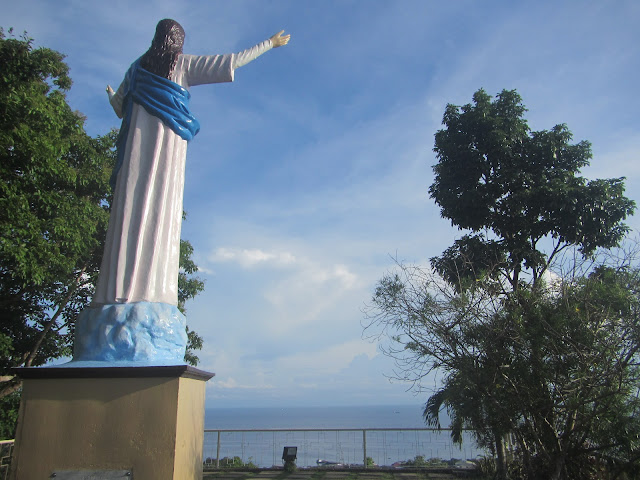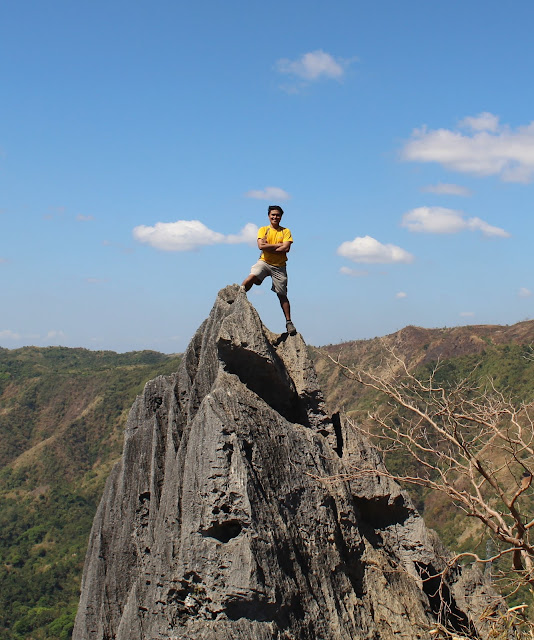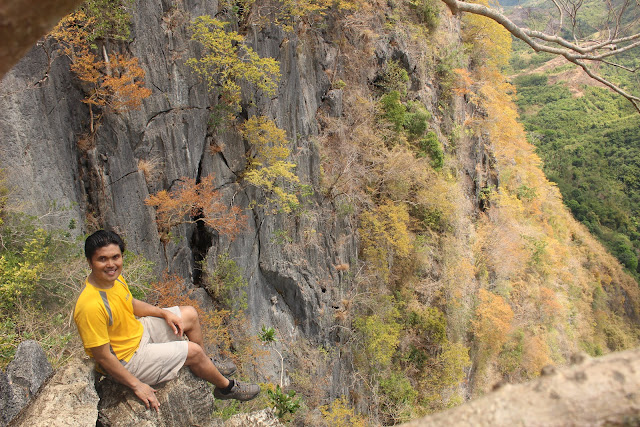Location: Southern Leyte, Philippines
Note: This is a part of my 4-day Maasin City Trip which includes: Shrine of Our Lady of the Assumption and the Most Precious Blood of Jesus, Shrine of Our Lady of the Assumption at Jalleca Hills, Our Lady of the Assumption Parish Cathedral of Maasin, Maasin City Tour, Saint Francis Javier Shrine and Canigao Island.

The first time I visited Maasin City was wayback November 2001. That was the time when I was still working with Philippine National Bank. By that time, I only strolled around the city and had not much experienced beyond its city limits. It was in May 2015 that I was enjoyed my visit to this place when stayed overnight in Limasawa Island with our accommodation at Dakdak Beach Resort. I was not able to visit its other interesting places and so in these posts, I am sharing my very recent escapade of Maasin City and beyond.

A colleague of mine had invited me to join in her vacation to her home town in Maasin and I did not have a second thought of joining her even if I knew that it was purely a family occasion that she was attending.

Prior to my visit, I read again online about a brief history of the city. I learned that it is a fourth class city and the capital of the province of Southern Leyte, Philippines. It has 70 barangays and located on the western part of the province with land area of 21,171 hectares (52,310 acres). It was only on August 10, 2000, when the town was chartered into a city. Maasin is noted for its tropical islands and white sand beaches.

Maasin was initially called "Nipa" when the Spaniards came to impose Christianity for its native settlers. The renaming of the town of Maasin is related to the incident when some Spaniards, who needed drinking water, scanned the shorelines and found Canturing River. They asked the natives in Castillan Spanish while gesturing towards the river, "Que pueblo es este?" Without hesitation, the natives answered "Maasin" (meaning salty), thinking that the Spaniards were asking them how the water tasted. From that time on, the place has been called Maasin.

I was not really concerned of sharing its cityscape but I just found some semblance of establishments we had in Manila that I decided to capture them for documentation to prove that the city has also the share of progress and development.

Buildings and other infrastructures will absolutely be not built if the a certain place is still so laid back. Its busy streets and bigger volume of vehicles dotting along its streets can tell, it is such a busy bustling city.

Being a lover of Goldilocks products, I captured them to remind me that I need to buy there my favorite "Crema de Fruta" but I have not seen a Red Ribbon outlet there.

Well, I will not wonder if Jollibee has also invaded Maasin City. According to Wikipedia, "Jollibee Food Corporation (JFC) has acquired some of its competitors in the fast food business in the Philippines and abroad such as Chowking, Greenwich Pizza, Red Ribbon, Mang Inasal, and Burger King Philippines. As of January 2015, JFC had a total of more than 3,000 stores worldwide,[4] with system-wide retail sales totaling 82.1 billion pesos for the fiscal year 2011."









HOW TO GET THERE
The nearest airports to Maasin are Cebu City, Ormoc City and Tacloban City. But plying from Cebu City would require you to board a ship from Cebu City's Pier 4 to cross to Hilongos, Southern Leyte for P286 which is around 5-6 hours sea travel of which we boarded M/V Joyful Stars. Then from Hilongos to Maasin is a bus service of P87 for more than 1 hour road travel.
If you are coming from Ormoc City, then it is approximately 3 hours drive for 131.9 kilometers via Baybay-Inopacan Road for a fare of P150. While if you are coming from Tacloban City Airport, then it is approximately 4 -5 hours drive at P270 for 194.8 kilometers via Bato - Bontoc Road and Eastern Nautical Highway.
If you opt to take a land travel via Bicol Peninsula and Samar, take Pintados Airconditioned Bus for P1,688 fare including ferry fare in Matnog (Sorsogon)-Allen/Alegria (Northern Samar) crossing or with the same route with Philtranco airconditioned buses for P1,706 excluding the ferry fare. This is either coming from Cubao or Pasay terminals to Maasin City. The travel time is approximately 26 - 28 hours excluding the waiting time for the availability of the ferry boat from Matnog to Allen.
Moving from one destination to another in Maasin City is easy. Or if you opt to go out from the city and find beautiful beaches, public transport is available.

















































